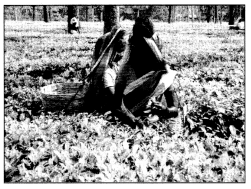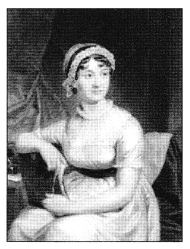Check the below NCERT MCQ Questions for Class 10 Geography Chapter 4 Agriculture with Answers Pdf free download. MCQ Questions for Class 10 Social Science with Answers were prepared based on the latest exam pattern. We have Provided Agriculture Class 10 Geography MCQs Questions with Answers to help students understand the concept very well. https://mcqquestions.guru/mcq-questions-for-class-10-geography-chapter-4/
Agriculture Class 10 MCQs Questions with Answers
Choose the correct option:
Agriculture Class 10 MCQ Question 1.
Which one of the following is not a food crop
(a) Rice
(b) wheat
(c) Cotton
(d) Maize
Answer
Answer: (c) Cotton
Agriculture MCQ Class 10 Question 2.
Muskmelon grows in
(a) rabi season
(b) kharif season
(c) zaid season
(d) all the three seasons
Answer
Answer: (c) zaid season
Class 10 Agriculture MCQ Question 3.
It takes almost a year to grow.
(a) Rice
(b) Sugarcane
(c) Maize
(d) Bajra
Answer
Answer: (b) Sugarcane
MCQ Of Agriculture Class 10 Question 4.
One of the following pulses which does not help in restoring soil fertility.
(a) Moong
(b) Gram
(c) Peas
(d) Arhar
Answer
Answer: (d) Arhar
MCQ On Agriculture Class 10 Question 5.
The second largest producer of groundnut is
(a) Gujarat
(b) Andhra Pradesh
(c) Tamil Nadu
(d) Kerala
Answer
Answer: (b) Andhra Pradesh
Class 10 Geography Chapter 4 MCQ With Answers Question 6.
Which of the following is known as golden fibre?
(a) Cotton
(b) Jute
(c) Hemp
(d) Silk
Answer
Answer: (b) Jute
Class 10 Geography Chapter 4 MCQ Question 7.
Rearing of silk worms for the production of silk fibre is known as:
(a) Sericulture
(b) Aquaculture
(c) Apeculture
(d) Pisciculture
Answer
Answer: (a) Sericulture
MCQ Agriculture Class 10 Question 8.
Coffee cultivation was first introduced in:
(a) Himalayas
(b) Aravalli Hills
(c) Garo Hills
(d) Baba Budan Hills
Answer
Answer: (d) Baba Budan Hills
Class 10 Geography Agriculture MCQ Question 9.
What percentage of our cropped area is covered by oilseeds?
(a) 21
(b) 12
(c) 2
(d) 4
Answer
Answer: (b) 12
Ch 4 Geo Class 10 MCQ Question 10.
Which one of the following is not true for pulses?
(a) Pulses are grown in both rabi and kharif season
(b) Pulses are leguminous crops
(c) They are grown in rotation with other crops
(d) Pulses require intensive irrigation facilities
Answer
Answer: (d) Pulses require intensive irrigation facilities
Class 10 Geography Agriculture MCQ Question 11.
Which of the following is the example of kharif crops?
(a) Rice
(b) Wheat
(c) Gram
(d) Peas
Answer
Answer: (a) Rice
MCQs On Agriculture Class 10 Question 12.
Which of the following describes a system of agriculture, where a single crop is grown on a large area?
(a) Shifting agriculture
(b) Plantation agriculture
(c) Horticulture
(d) Intensive agriculture
Answer
Answer: (b) Plantation agriculture
MCQs Of Agriculture Class 10 Question 13.
Which one of the following is not a cropping season?
(a) Winter
(b) Kharif
(c) Rabi
(d) Zaid
Answer
Answer: (a) Winter
Geography Class 10 Chapter 4 MCQ Question 14.
Which one of the following crops is known as ‘Golden Fibre?
(a) Wheat
(b) Rice
(c) Groundnut
(d) Jute
Answer
Answer: (d) Jute
Class 10 Geo Ch 4 MCQ Question 15.
Which one of the following crops is a beverage crop?
(a) Tea
(b) Cotton
(c) Wheat
(d) Bajra
Answer
Answer: (a) Tea
Agriculture Class 10 MCQs Question 16.
Which country is the largest producer of fruits and vegetables in the world?
(a) Canada
(b) USA
(c) Pakistan
(d) India
Answer
Answer: (d) India
Question 17.
Arabica variety of coffee was initially brought to India from which of the following countries?
(a) Yemen
(b) Vietnam
(c) Japan
(d) Korea
Answer
Answer: (a) Yemen
Question 18.
Which one of the following is the example of plantation agriculture?
(a) Jute
(b) Wheat
(c) Tea
(d) Oilseeds
Answer
Answer: (c) Tea
Question 19.
Which country is the largest producer of oilseeds in the world?
(a) China
(b) India
(c) USA
(d) Pakistan
Answer
Answer: (b) India
Question 20.
In which type of soil does maize grow well?
(a) Black
(b) Light domat
(c) Old alluvial
(d) None of these
Answer
Answer: (d) None of these
Question 21.
Which of the following crops is not a millet?
(a) Jowar
(b) Maize
(c) Ragi
(d) Bajra
Answer
Answer: (b) Maize
Question 22.
Of which one of the following beverage crops, India is the leading producer as well as
exporter in the world?
(a) Coffee
(b) Pulses
(c) Tea
(d) Curd
Answer
Answer: (c) Tea
Question 23.
Which one is an important rabi crop?
(a) Paddy
(b) Watermelon
(c) Wheat
(d) Maize
Answer
Answer: (c) Wheat
Question 24.
Which among the following is a fibre crop?
(a) Rubber
(b) Jute
(c) Tomato
(d) Coffee
Answer
Answer: (b) Jute
Question 25.
Which of the following crops is used both as a food and as a fodder?
(a) Jowar
(b) Wheat
(c) Maize
(d) Tea
Answer
Answer: (c) Maize
Given below are names of some crops grown in India. Categorise them into rabi, kharif and zaid crops.
bajra, barley, wheat, rice, maize, peas, jute, groundnut, watermelon, muskmelon, moong, grain
Answer
Answer:

Look at the given picture carefully and answer the questions that follow:

(i) What are these women engaged in?
(ii) Name the sates where it is grown.
Answer
Answer:
(i) These women are engaged in tea-leaves harvesting.
(ii) Tea is grown in Assam, West Bengal, Tamil Nadu and Kerala
We hope the given NCERT MCQ Questions for Class 10 Geography Chapter 4 Agriculture with Answers Pdf free download will help you. If you have any queries regarding Agriculture CBSE Class 10 Geography MCQs Multiple Choice Questions with Answers, drop a comment below and we will get back to you soon.


